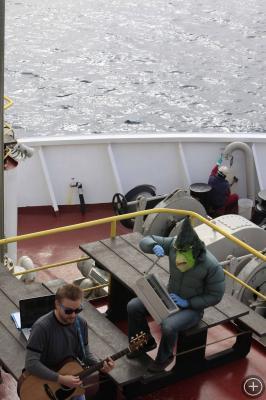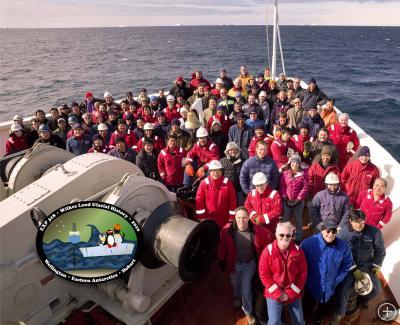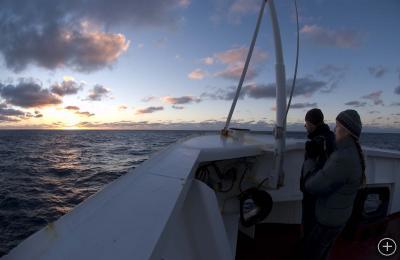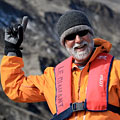The End of the Beginning…
Temperature 12°C, wind 10 kts, 1 meter swells
2 more days at sea….
ABOARD THE JOIDES RESOLUTION, IN TRANSIT TO HOBART, TASMANIA– The work of the ship ended as quickly as it started nearly two months ago. We finished drilling Site 1361 and logged the hole. The drillers tripped 3500 meters of pipe and prepped it for storage as the ship will not drill again until July – off the coast of British Columbia. Everyone on board is absolutely brain dead from the non-stop grind of 12-hour shifts day after day. But all are happy as well. We’ve completed most of our objectives and made some exciting discoveries. When we did not meet with complete success it was always because of weather and ice, either encroaching sea ice or fields of icebergs so thick that we had no chance to pass.
Now we have some days in transit. These days are filled with meetings to design our post-cruise research. We will all spend much more time at home working on the cores than our actual days at sea on this expedition. Some of the methods we will employ are expensive and difficult and we have recovered nearly 2000 meters of core. This means that we must carefully select the intervals we will study, so that we can answer the most important questions about Antarctic climate change as quickly as we can. For some of us, the analytical work will extend over the next 4 years. Then other scientists will work on these cores for decades to come. They will be stored in a vast library of ocean cores in College Station, Texas, at the IODP core repository where they are available to scientists from all over the world.
What I like most about these days in transit is going off shift. I no longer set my alarm to awake at 11PM. The two shifts mingle at meals and in the labs, almost as strangers at first as they have not seen much of each other for more than 7 weeks.
Working groups between the shifts assemble to design research strategies and timetables. I will lead a group that will make oxygen isotopic measurements of the small shells of amoeba-like organisms called foraminifera. Forams, as we call them, live for about 4 weeks during the brief Antarctic summer. They build their tiny shells out of calcium carbonate, the main mineral that makes up limestone. By measuring the ratios of two types of oxygen in the carbonate we can tell the temperature of the water in which the forams grew. We will make these analyses on forams that were living in Antarctic surface waters hundreds, thousands, and even millions of years ago to see how warm the water was next to the Wilkes Land coast. We already know from our microscope work on board that this part of Antarctica has been very warm at times, maybe 10 to 15 degrees centigrade warmer when we go back 35 million years. The foram work will help tell us exactly how warm the waters may have been during more recent periods when we know the ice sheet became much smaller. The results will help us predict the behavior of Antarctic ice in the future.
What a trip it’s been! I hope you’ve enjoyed these blogs. If you live in the Bay Area, please look for a notice about a talk I’ll likely give on this expedition in 6 months or so, after we’ve had a chance to start the shore-based part of the work. As we pull ever closer to Hobart we are very much aware that we are simply reaching the end of the beginning.













Excellent and fascinating blogs, Rob. Thanks so much for keeping us alongside on this amazing science journey.